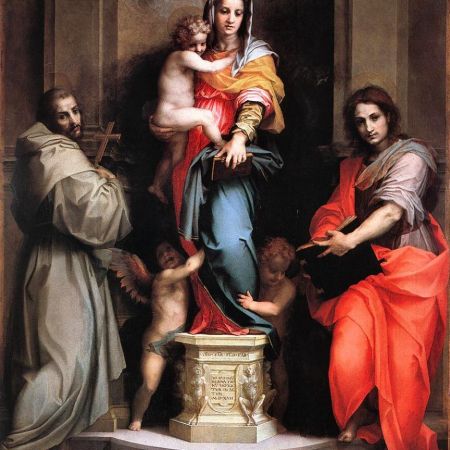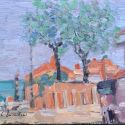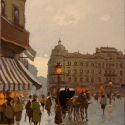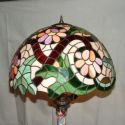 LONDON, ENGLAND.- King Street – A rediscovered drawing by Andrea del Sarto, the last great Florentine artist of the High Renaissance, sold today at Christie’s in London for £6,504,000 / $11,395,008 / €9,586,896, a world record price for the artist. Head of St Joseph, a study for a picture now in the Pitti Palace, Florence, has become the third most expensive old master drawing ever sold at auction. A photograph from the 1920s had alerted scholars to the existence of this work, but its whereabouts have been a mystery. The work reappeared after more than 50 years in a private Swiss collection. The drawing was bought by Jean-Luc Baroni.
LONDON, ENGLAND.- King Street – A rediscovered drawing by Andrea del Sarto, the last great Florentine artist of the High Renaissance, sold today at Christie’s in London for £6,504,000 / $11,395,008 / €9,586,896, a world record price for the artist. Head of St Joseph, a study for a picture now in the Pitti Palace, Florence, has become the third most expensive old master drawing ever sold at auction. A photograph from the 1920s had alerted scholars to the existence of this work, but its whereabouts have been a mystery. The work reappeared after more than 50 years in a private Swiss collection. The drawing was bought by Jean-Luc Baroni. Andrea del Sarto (Florence 1486-1530), the son of a Florentine tailor, began his training as an apprentice to a goldsmith. However, his talent for drawing rapidly emerged and he soon moved to the workshop of Piero di Cosimo. In 1508 Sarto became an independent artist, sharing his studio with his friend and contemporary Francabigio. He absorbed the artistic influences of the Florentine careers of Leonardo da Vinci, Michelangelo and Raphael, and soon became the leading painter in the city, receiving commissions from religious orders, individual collectors and above all the Medici family. In 1518, with his reputation spreading, Sarto was summoned to the court of François I, King of France. He returned to Florence in 1519 and resumed his intensely busy career, which was cut short by his death from the plague in 1530 at the age of only 44.
The drawing sold at Christie’s is a study for the head of Saint Joseph in the altarpiece of the Holy Family now in the Pitti Palace, Florence. This work was commissioned directly from Sarto by Zanobi Bracci in about 1523. The drawing shows the head of Saint Joseph in a startlingly realized study fully developed in a subtle combination of black and red chalk, with a secondary drawing below it in which Sarto revisits the subject with Saint Joseph’s eyes open. The verso shows two studies of legs in red chalk, an unpublished addition to Sarto’s works which was unknown save for a misleading reference in an 18th century footnote.

































